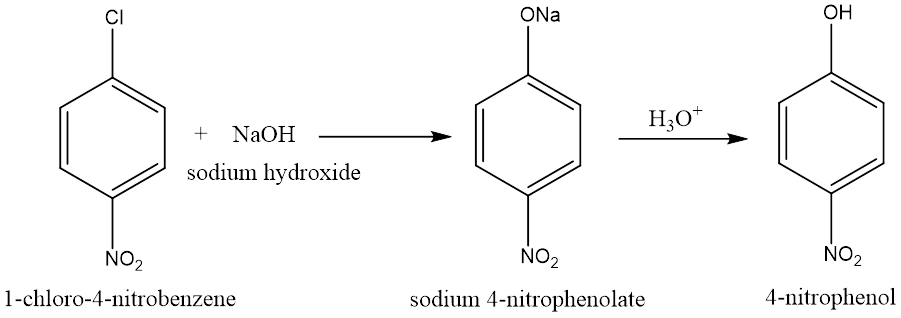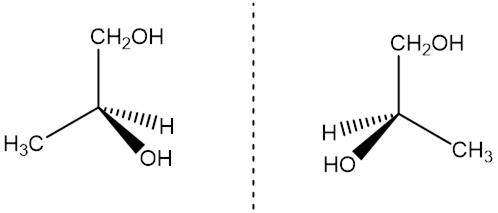(i) Out of ![]() and
and ![]() which one is more reactive towards SN1 and why?
which one is more reactive towards SN1 and why?
(ii) Write the product formed when p-nitrochlorobenzene is heated with aqueos NaOH at 443 K followed by acidification.
(iii) Why dextro and laevo – rotatory isomers of butan-2-ol are difficult to separate by fractional distillation?
(i) The SN1 mechanism follows formation of a carbocation as an intermediate in the transition state. Thus the ease with which the carbocation is formed depends upon the ease with which the C ─ X bond can be broken. Bond strength depends upon bond length. As the bond length of C ─ I bond length is greater than C ─ Br bond it breaks easily. Thus ![]() undergoes SN1 reaction more easily as compared to
undergoes SN1 reaction more easily as compared to![]() .
.
(ii) Nitrobenzene has a nitro substituent which is a deactivating or an m-directing. This decreases the electron density in the benzene ring due to negative resonance effect. Thus during treatment of p-nitrochlorobenzene with NaOH it undergoes nucleophilic substitution reaction to give sodium para nitrophenolate ion which on hydrolysis gives p-nitrophenol.

(iii) The rotation of the plane of plane polarised light are Dextro – right and laevo – left. Rotational isomers are identified by their characteristic rotation of the plane polarized light in the polarization setup. They do not vary in any physical or chemical properties except for the spatial arrangement of the substituents. Thus they cannot be separated by physical distillation process.

As you can see there is no structural or functional difference in the compound.